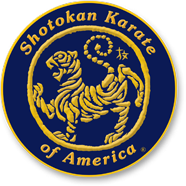- Suwariwaza means techniques from a seated position
- Torite means escaping
Tsutomu Ohshima – Suwari Torite (escapes while seated) Sept 6, 1984
Aikido shikko ho (knee walking) exercise, helpful in strengthening your hips:
Norman Welch – Suwari Keiko (sitting practice):
France Shotokan godan, Richard Heigel instructs Suwari-torite
Mifune Kyūzō torite at age 72
Opening screens read:
ごしんじゅっ
護身術
相手の攻撃から身工護る
ために生れたのが護鼻術
です
三船十段は諸派の護身術
にさらに工夫をこらして
まとまった形をつくり上
げました。
居取
Philippe Lecouvé demonstrates Torite 2010
Ek Tong Ear torite demo at 2009 Nisei Week
Ohshima Sensei demonstrates torite in the Grecian heat
Mike Lyon – Basic exercises to develop torite and suwariwaza (ca 2000):
Torite means ‘escaping’ and suwari-waza means ‘seated techniques’. An important component of torite is suwari-waza: sitting and kneeling techniques.
If you have not explored this sort of technique and you would like to discover something important, then I recommend this as very good practice.
- Kneel and stand. To sit: Heels together, toes apart. With spine vertical, slowly kneel — one knee touches down, the other knee touches down, the toes relax so instep is flat, the hips drop between the heels. To stand: hips rise, toes go under (ball of foot on floor), one knee rises, the other rises, then stand up with back vertical. Repeat, Alternating which knee touches first when you kneel, and which lifts first when you stand. If you lean forward, your opponent will punch your face!
- Kneeling Oi-zuki. From seiza (with toes relaxed and instep flat on floor,) slide one knee and hip forward while keeping hips as low as possible. Big toes remain touching until back toes are in position with ball of foot under the hip. Like back stance, hip and shoulders parallel to punch. Slide forward to seiza. Repeat, alternating sides.
- Open to the side. From seiza, keep hips low as possible and open one leg to the side while pulling toes under so ball of back foot is firmly into the ground. Opponent grabs your wrist — you release it, make a wrist lock, and throw. Repeat, alternating sides.
- Turning to the rear. From seiza, with hips firmly in trough of heels, make open hand age-uke with one arm. After block is complete, take opponent’s wrist, pivot to face the rear while drawing opponent’s wrist to your hip, pulling toes under so ball of standing leg foot is firmly in the ground, and throw. Sit back into seiza and repeat, alternating sides.
- Continuous kneeling oi-zuki. From kneeling punch, slide forward drop front knee to ground and pivot on it with toes curled under to make opposite side punch. Repeat. Try to feel very relaxed in the hips, allowing them to rotate fully 180 degrees with each punch and exaggerate the stretching of the quads and groin. Don’t emphasize the punch, rather emphasize full range of motion and low hips. This should become enjoyable.
The exercises above are the ones which I have found to be most valuable. I also practice several kicking forms from seiza:
- Mae-geri (not illustrated in video) — while seated, without lifting the hips, slide the kicking knee forward and up, making front-kick while pivoting on the standing knee and pulling toes under so ball of foot is into floor. Repeat, alternating sides.
- Mawashi-geri — while seated, keep knees in place and drop shoulders toward floor, placing weight on hands on the floor far from the hips and straight to the side. Only after weight is firmly on the hands, let hip ‘snap’ into alignment with shoulder raising knee and making kick with toes of standing foot curled under so ball of foot is into floor. Repeat, alternating sides. Don’t over-rotate!
- Yoko-geri kekomi — while seated, drop body straight back, turning to place weight on hands on floor almost straight behind. After weight is firmly on the hands, allow the hip to turn and bring kicking knee all the way to your shoulder and standing toes curl under so ball of foot is into floor. Watch opponent from under your arm and extend kick, then draw knee back to shoulder and return to sitting. Repeat. In this kick, the hands become the ‘back heel’ and the kick extends from the hands. Don’t tighten up!
— Mike Lyon, yodan, Kansas City Dojo
